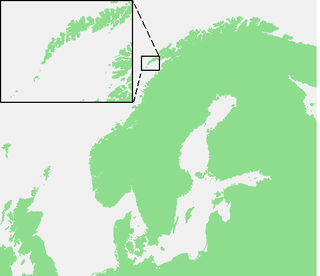 W
WOperation Anklet was the codename given to a British Commando raid during the Second World War. The raid on the Lofoten Islands was carried out in December 1941, by 300 men from No. 12 Commando and the Norwegian Independent Company 1. The landing party was supported by 22 ships from three navies.
 W
WOperation Archery, also known as the Måløy Raid, was a British Combined Operations raid during World War II against German positions on the island of Vågsøy, Norway, on 27 December 1941.
 W
WCommando raids were made by the Western Allies during much of the Second World War against the Atlantic Wall. The raids were conducted by the armed forces of Britain, the Commonwealth and a small number of men from the occupied territories serving with No. 10 (Inter-Allied) Commando during the Second World War. All the operations took place between the Arctic Circle in Norway and the French border with Spain, along what was known as the Atlantic Wall.
 W
WBamse was a St. Bernard dog that became the heroic mascot of the Free Norwegian Forces during the Second World War. He became a symbol of Norwegian freedom during the war.
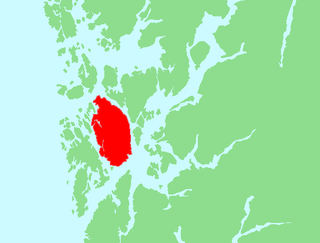 W
WOperation Cartoon was a British Commando raid on the island of Stord near Leirvik in Hordaland, Norway on the night of 23/24 January 1943. The operation was carried out by 53 men of No. 12 Commando supported by ten men from the Norwegian 10 (IA) Commando. RAF Coastal Command co-operated with the Commandos, with aircraft from 18 Group.
 W
WThe Directives for Military officers and Military Commanders upon an Armed Attack on Norway is commonly referred to as “the poster on the wall” since it was posted in every military office wall until after the Cold War ended. The poster on the wall is a directive which sets out the duties for all Norwegian commanding officers and Ministry Officials during any attack on Norway. It was issued by Norwegian Royal resolution on June 10, 1949.
 W
WThe 1943 Filipstad explosion was a fire in an ammunition store at Filipstad in Oslo on Sunday, 19 December 1943, during the occupation of Norway by Nazi Germany. The fire started during the unloading of ammunition from the transport ship Selma. The estimated amount of exploded ammunition varies from 800 to 1,200 tons. A large number of shells and grenades were tossed into the air and spread over the city. There were around 40 Norwegian casualties and around 75 Germans were killed, and 400 wounded. About 400 buildings were severely damaged.
 W
WOperation Freshman was the codename given to a British airborne operation conducted in November 1942 during World War II. It was the first British airborne operation conducted using Airspeed Horsa gliders, and its target was the Vemork Norsk Hydro chemical plant in Telemark, Norway which produced heavy water for Nazi Germany.
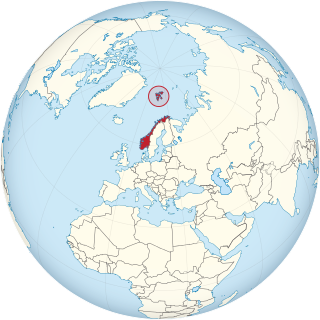 W
WOperation Fritham was an Allied military operation during the Second World War to secure the coal mines on Spitsbergen, the main island of the Svalbard Archipelago, 650 mi (1,050 km) from the North Pole and about the same distance from Norway. The operation was intended to deny the islands to Nazi Germany.
 W
WOperation Gearbox was a Norwegian and British operation on the Arctic island of Spitzbergen in the Svalbard Archipelago, during the Second World War. Operation Fritham, an earlier expedition in two ships, arrived on 13 May but met disaster after being spotted by a Luftwaffe Ju 88 bomber. Next day, four Fw 200 reconnaissance bombers attacked and killed fourteen men, including Einar Sverdrup, the commander. Eleven men were wounded, two mortally, one ship was sunk and the other set on fire.
 W
WOperation Gearbox II was a Norwegian and British operation during the Second World War on the Arctic island of Spitzbergen in the Svalbard Archipelago. Operation Fritham, the first attempt to establish a base had been defeated when the two ships carrying the force were sunk by Luftwaffe bombers on 14 May.
 W
WNorwegian heavy water sabotage was a series of Allied-led efforts to halt German heavy water production via hydroelectric plants in Nazi Germany-occupied Norway during World War II. It was successfully undertaken by Norwegian commandos and Allied bombing raids. During the war, the Allies sought to inhibit the German development of nuclear weapons with the removal of heavy water and the destruction of heavy-water production plants. The Norwegian heavy water sabotage was aimed at the 60 MW Vemork power station at the Rjukan waterfall in Telemark.
 W
WThe Liberation of Finnmark was a military operation, lasting from 23 October 1944 until 26 April 1945, in which Soviet and Norwegian forces wrested away control of Finnmark, the northernmost county of Norway, from Germany. It started with a major Soviet offensive that liberated Kirkenes.
 W
WLittle Norway, officially Flyvåpnenes Treningsleir, was a Norwegian Army Air Service/Royal Norwegian Air Force training camp in southern Ontario during the Second World War.
 W
WOperation Mardonius was a military operation directed against German ships in occupied Norway, planned and carried out in 1943 by the British Special Operations Executive (SOE). The outcome of the operation was sinking of two ships in the harbour of Oslo, Ortelsburg of Hamburg and Tugela.
 W
WThe Battle of Midtskogen was a minor battle fought on the night of 9–10 April 1940 during the Second World War between a German raiding party and an improvised Norwegian force. The site of the battle was Midtskogen farm, situated approximately 5 km (3.1 mi) west of the town of Elverum at the mouth of the Østerdalen valley in southern Norway. The invading German troops aimed to capture King Haakon VII and his cabinet, thereby forcing Norway into submission. After a short battle, the German force withdrew, having lost its commander in the fighting.
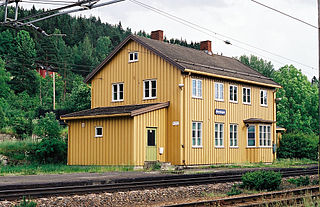 W
WMorskogen is a stretch of woodland on the Mjøsa, Norway's biggest lake. It is located between Eidsvoll, Viken and Stange, Innlandet.
 W
WOperation Hardboiled was a Second World War military deception. Undertaken by the Allies in 1942, it was the first attempt at deception by the London Controlling Section (LCS) and was designed to convince the Axis powers that the Allies would soon invade German-occupied Norway. The LCS had recently been established to plan deception across all theatres, but had struggled for support from the unenthusiastic military establishment. The LCS had little guidance in strategic deception, an activity pioneered by Dudley Clarke the previous year, and was unaware of the extensive double agent system controlled by MI5. As a result, Hardboiled was planned as a real operation rather than a fictional one. Clarke had already found this approach to be wasteful in time and resources, preferring to present a "story" using agents and wireless traffic.
 W
WOperation Jupiter was the code name for a plan originating in 1941 for an invasion of northern Norway and Finland by Allied forces during the Second World War. The first versions of the plan were code named Operation Dynamite, Operation Ajax and Operation Marrow. Devised and vigorously promoted by Sir Winston Churchill, the Prime Minister of the United Kingdom, the plan was opposed by all the senior British and Allied commanders, who considered it impractical because of insufficient air support and of limited value. The scheme was eventually abandoned in favour of the Normandy landings.
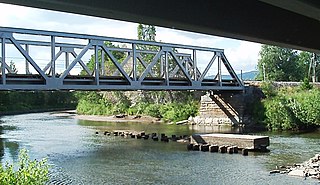 W
WOperation Woodlark, also known as the Jørstadelva Bridge sabotage, was an operation carried out on 13 January 1945 by members of the Norwegian Independent Company 1 during the Second World War The aim was to blow up a railway bridge in order to disrupt the Nordland Line railway in Snåsa, Norway. Six hours after the bridge had been destroyed, a military troop train was derailed and crashed into the river below, killing 70–80 people and injuring some 100 more. It is the most deadly rail incident ever in Norway.
 W
WOscarsborg Fortress is a coastal fortress in the Oslofjord, close to the small town of Drøbak in Viken county, Norway. The best known part is situated on two small islets. The main artillery batteries are on the island Håøya and smaller batteries on the mainland to the west and east in the fjord and was military territory until 2003 when it was made a publicly available resort island. The fortress is best known for sinking the German heavy cruiser Blücher on 9 April 1940. In 2014, Oscarsborg Fortress was given protected status.
 W
WSkorpa is an uninhabited island in the municipality of Herøy in Møre og Romsdal county Norway. Skorpa lies directly west of the island of Nerlandsøya, across the Skorpesund, about 6 kilometres (3.7 mi) west of the town of Fosnavåg. The island of Gurskøya lies 5 kilometres (3.1 mi) to the southeast, across the Herøyfjorden. The Svinøy lighthouse is located 11 kilometres (6.8 mi) to the east.
 W
WTrandumskogen is a forest located in Ullensaker, Akershus county, Norway. It was the site of one of the first discoveries in May 1945 of German mass graves in Norway. The German executioner Oskar Hans was the officer in command of the unit performing the executions.
 W
WThe Dutch steam trawler Voorbode was a fishing vessel, until it was confiscated by the Germans during World War II and used for military transport. In April 1944, it was on its way from Oslo to Kirkenes when it faced mechanical problems, forcing it to seek repair in Bergen, Norway. Due to lack of control, the ship was allowed entrance to Bergen harbour loaded with 124,000 kg (273,000 lb) of explosives, even though the ship did not satisfy security regulations and should not have been allowed into major cities with this cargo.
 W
WOperation Weserübung was the code name for Germany's assault on Denmark and Norway during the Second World War and the opening operation of the Norwegian Campaign.
 W
WThe Western Front was a military theatre of World War II encompassing Denmark, Norway, Luxembourg, Belgium, the Netherlands, the United Kingdom, France, Italy, and Germany. World War II military engagements in Southern Europe and elsewhere are generally considered as separate theatres. The Western Front was marked by two phases of large-scale combat operations. The first phase saw the capitulation of the Netherlands, Belgium, and France during May and June 1940 after their defeat in the Low Countries and the northern half of France, and continued into an air war between Germany and Britain that climaxed with the Battle of Britain. The second phase consisted of large-scale ground combat, which began in June 1944 with the Allied landings in Normandy and continued until the defeat of Germany in May 1945.